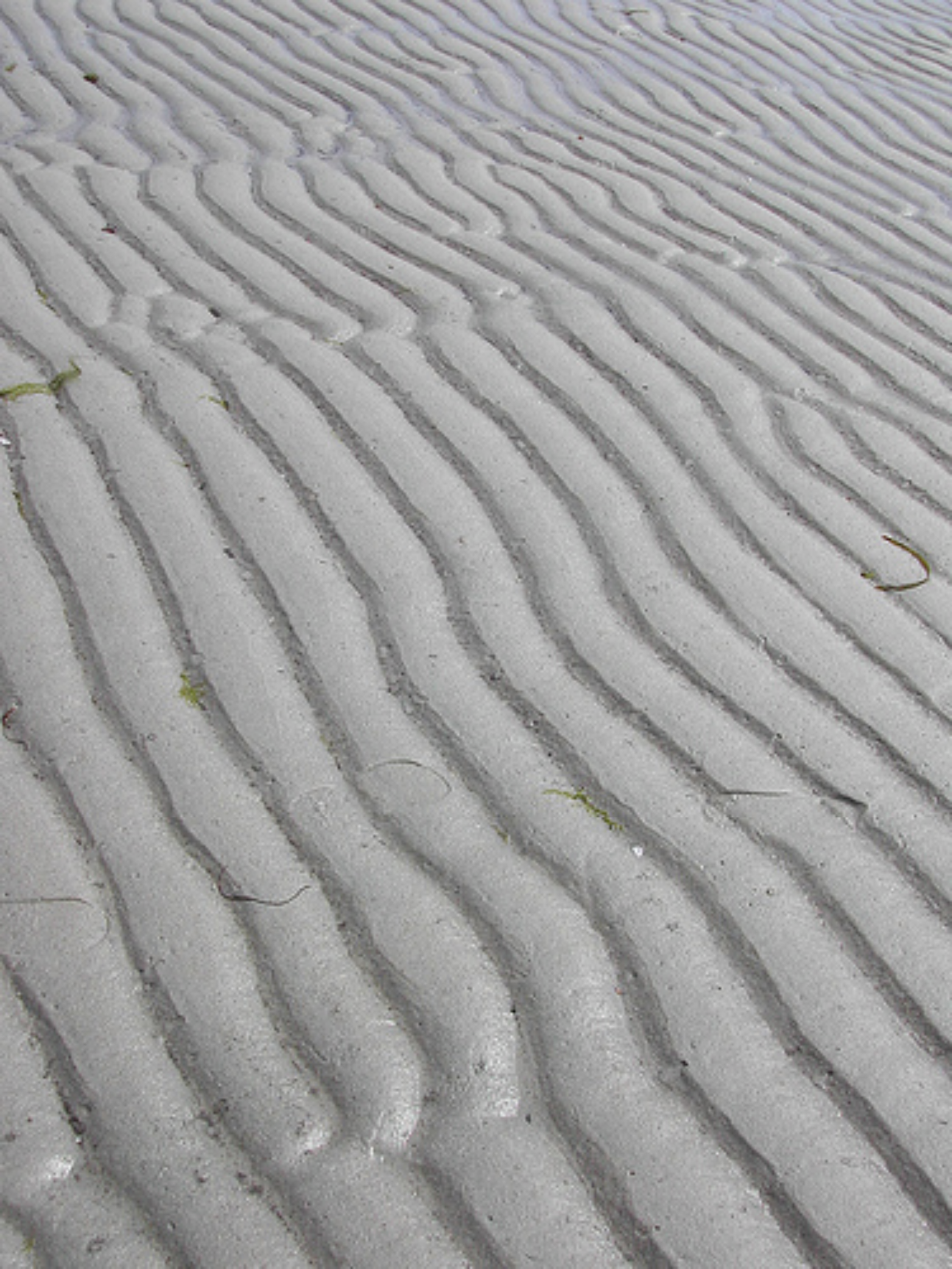January 01, 2011 Filed in:
Demo CornerStephen Morris, Department of Physics, University of Toronto
smorris@physics.utoronto.ca
Many of the ordered structures that we see in the natural world are self-organized in the sense that they emerge spontaneously from the normal operation of the underlying laws of physics, but in a way which is not at all obvious from those laws, and with some regular order which is not due to external guiding forces. Ripples on the sand at the beach (Fig. 1) are an example; somehow the action of the turbulent waves on the individual grains conspires to form the ripples, a highly organized patterned state. The wavelength of the ripples is not at all obvious in the basic physics of water-sand interaction.
Such phenomena are a rich source of fascinating physics, but are almost never discussed with undergraduates, much less high-school students. They are almost always due to highly nonlinear feedback mechanisms which defy simple cause and effect theorizing. Despite much current research, their explanations are often contentious and elusive. But that only increases their attractiveness.
Here are a few nice examples, some familiar and some not, a few easy to try at home, all of which can be seen in short online videos. These videos are public and easily linked into documents or embedded in web pages.
 Figure 1: Ripples on sand.
Figure 1: Ripples on sand.

Everyone knows that if you dribble syrup or honey onto a pancake from a height, the syrup wraps itself into coils like a rope. But what happens if you move the pancake uniformly under the nozzle? It turns out that adding a translational motion
unfolds the coiling into an interesting zoo of different states. In the following movie, syrup (Lyle’s Golden Syrup works nicely) falls onto a moving belt, forming a device known as a
fluid mechanical sewing machine. The belt continuously slows down, spanning a range of states from straight at high speed to coiling at low speed. These states are separated by abrupt
bifurcations at which the form of the motion changes suddenly. The belt is 1 cm wide and the nozzle is a few centimetres above the belt.
Icicles are picturesque features of any Canadian winter. But what determines their shape? And why are some icicles covered with ripples? Remarkably, there is a theory which says that all icicles are isomorphic in overall shape. That is, all icicles are just rescaled versions of one another. We built an icicle growing machine to test this idea and found that it is indeed the case — under certain conditions! The ripples, which are not included in the shape theory, are probably the result of a separate surface tension driven instability. They are observed to slowly climb up the icicles during growth. Given below are links to three time-lapse videos of the experiment. In some runs, we rotated the icicle to encourage rotational symmetry. It takes about 10 hours to grow an icicle, and the rotation rate was once every 4 minutes, so it looks very fast in time-lapse but is actually quite slow.

Anyone who has driven on gravel back roads knows they are anything but smooth. In fact, they quickly develop periodic bumps called
washboard road. These bumps appear spontaneously above a certain threshold speed and, contrary to common opinion, are not simply related to the bouncing frequency of the suspension. Similar bumps, but with a smaller wavelength and amplitude, can even appear on the steel rails of Toronto streetcar tracks.
We built a lab version in which a wheel rolls around the circumference of a rotating table covered with a “road” made of sand. The wheel has no spring suspension; it simply falls on a lever under gravity. The washboard pattern moves slowly in the driving direction. There is a critical driving speed below which the flat road is stable, but it is too low to be a practical way to avoid washboard on real roads.
An even simpler version replaces the wheel with an inclined blade, forming a plough. The following is a stroboscopic movie, in which the camera takes a picture once per table rotation, so the table appears stationary. In fact, it moves counterclockwise (seen from above), so the ripples move up rotation (i.e. clockwise or down the road in the driving direction). Notice how the ripple speed slows and the wavelength lengthens as the ripples grow to full amplitude.
Students might enjoy reproducing these patterns, or observing them in the wild. For many other examples of nonlinear pattern formation, see
Or the series of books Natures Patterns: a Tapestry in Three Parts, by Philip Ball:
http://www.philipball.co.uk/naturespatterns.php
Column Editor: Ernie McFarland, Physics Department, University of Guelph, Guelph, Ontario, N1G 2W1 

